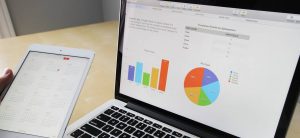Ensuring data reliability along the KPI lifecycle
The lifecycle of a Key Performance Indicator (KPI) is a dynamic process involving definition, recalibration, and—sometimes—abandonment. From establishment to practical application and ongoing evolution, KPIs undergo several steps to effectively measure performance, and prioritizing data reliability at every stage is crucial to achieving their intended purpose.
-
The foundation of reliable data
The first stage of the cycle, KPI selection, may seem simple, but it is a complex process intertwined with various interdependencies and calibrations with the organization’s objectives.
Establishing data reliability should start from this initial step, and involving employees as primary sources for KPI selection is an effective approach. Their valuable knowledge about the data generated from their activities enhances the reliability of the selected KPIs. Additionally, considering data availability and reliability as criteria for the selection further enhances overall data trustworthiness.
KPI documentation plays a pivotal role in ensuring reliability. Adopting a standardized documentation form establishes a solid foundation for rigorous and dependable data collection and reporting. This approach provides clear guidelines for defining KPIs, including unambiguous calculation formulas, ensuring that the collected data accurately reflects the intended purpose of each KPI.
-
Establishing dependable data collection
During the activation of KPIs, data reliability depends on the meticulous consideration of data sources, robust data-gathering methods, and the establishment of a strong governance structure. It is imperative to utilize trusted and verified data sources that are up-to-date, accurate, and aligned with the KPIs being measured. Accountability for KPI data should be established by clearly designating KPI owners and data custodians. Furthermore, adopting a standardized data collection process that incorporates technology-driven solutions significantly enhances accuracy.
-
Communicating meaningful insights
The analysis and reporting of KPIs are significant in ensuring the correct organization and communication of data to key stakeholders. Errors in data analysis have the potential to result in misleading insights, which can have negative effects on decision-making. Therefore, correctly identifying relevant KPI content and conveying meaningful insights derived from KPI data to various stakeholder groups within the organization is essential.
-
Continuous improvement
Finally, data reliability can be enhanced through the process of refreshing KPI documentation. This ongoing effort involves recalibrating KPIs after their initial establishment and customizing them for optimal use.
Attention is given to both the content of the KPIs and the standardization of their format. Standardizing KPI content establishes uniform guidelines and criteria for measurement and reporting, ensuring data reliability and consistency. This step refines the measurement and reporting processes, facilitating accurate and dependable data for decision-making purposes.
Monitoring KPI data reliability: The role of the Data Custodian
The Data Custodian is critical in upholding the reliability of data. They actively participate in the design of performance data collection, receipt and storage, processing, analysis, reporting, dissemination, and even archival or deletion of data. They implement measures to validate and verify the accuracy, consistency, and completeness of the data. This involves conducting regular data audits, resolving discrepancies or anomalies, and implementing data cleansing processes to ensure data integrity.
To evaluate the reliability of KPI data, the Data Custodian can monitor % KPIs with reliable data. This metric measures the number of reported KPIs that contain reliable and trustworthy content out of the total number of KPIs reported, according to smartKPIs.com.
In conclusion, to succeed in a data-driven world, organizations must prioritize data reliability along the KPI lifecycle. By implementing the strategies and practices discussed above, organizations can unlock the true potential of their performance measurement systems and empower stakeholders with reliable insights for better decision-making.


